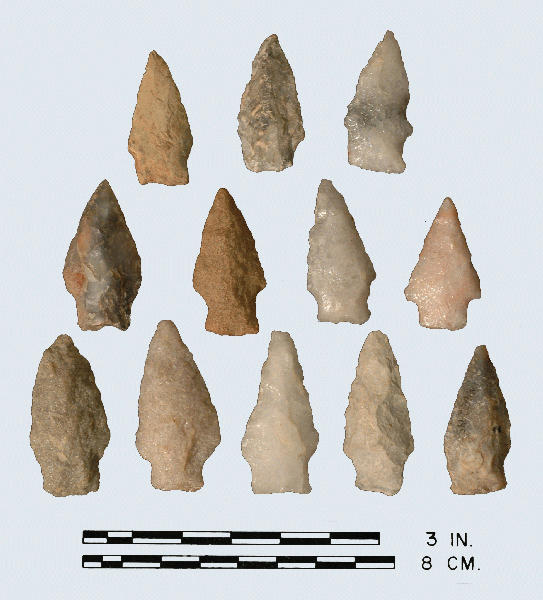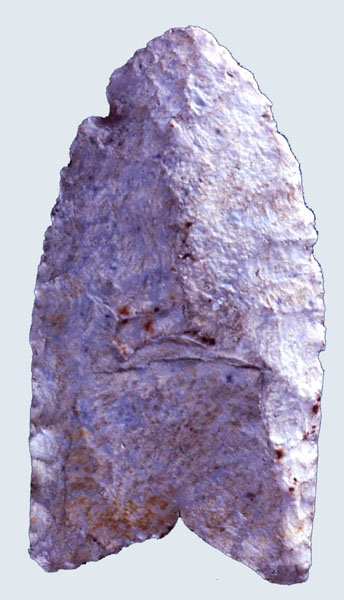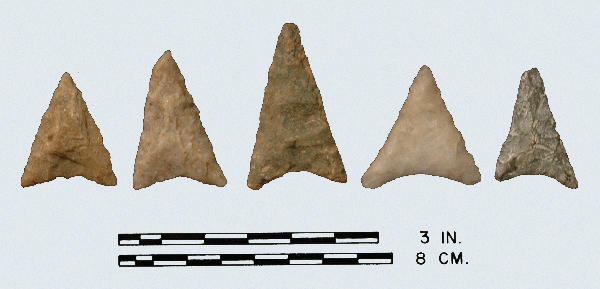Calvert: Top Row: tuff, rhyolite, quartz; Middle Row: chert, quartzite, quartz, quartz, Bottom Row: quartzite, quartzite, quartz, rhyolite, chert.
Type Square Early Woodland
Defining Attributes
The Calvert is a typically short, thick, wide point with rudimentary shoulders, parallel sided or slightly contracting stem, and a straight or slightly rounded base. The stem often comprises 30 to 50 percent of the total length.
Chronology
The Calvert point dates to the Early Woodland period, 1200 to 500 BCE. Waselkov (1982) obtained three radiocarbon dates on Calvert points, in association with Bushnell Plain pottery.
Description
- Blade: The blade is a short, thick, stubby triangle, with convex edges, a sharp tip, and thick, irregular cross section. Abrupt, though slight, shoulders separate the blade and the stem.
- Base: The base is usually straight, and often convex in the contracting stem examples. The stem is straight or slightly contracting, thinner than the blade, and usually wider than it is long (though in some examples width and length are about equal).
- Size: Length ranges from 25 to 48 mm. with an average of 36 mm. Width ranges from 18 to 27 mm. with an average of 22 mm. Thickness ranges from 8 to 13 mm. with an average of 10 mm.
- Technique of manufacture: Moderately well made by percussion chipping with some pressure flaking around the edges.
Discussion
Stephenson placed the Calvert type in the Early Woodland and said that it was closely related to the Vernon (1963). This type is similar to the Gypsy type defined by Oliver (1981) in North Carolina. This illustrates the reduction in size of points that was occurring across much of the East Coast of the United States at this period of time.
Defined in Literature
This type was originally defined by Stephenson (1963) based on points recovered from the Accokeek Creek Site in Maryland.
References




